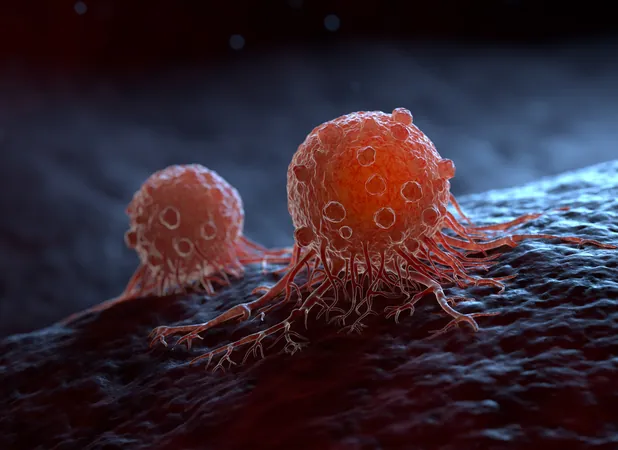
The Future of Cancer Treatment: Game-Changing One-Second Therapy Set to Replace Radiation!
2025-01-25
Author: Wei
Introduction
Cancer treatment is on the verge of a groundbreaking transformation thanks to an innovative method known as Flash radiotherapy. This revolutionary approach delivers radiation in less than a second, presenting an exciting new avenue for safer and more effective cancer care.
Traditional Radiotherapy vs. Flash Radiotherapy
Traditionally, radiotherapy has been a mainstay in cancer treatment, involving prolonged exposure of tumors to radiation over several minutes during numerous sessions. While this method has proven effective, it often inflicts damage on the surrounding healthy tissues, particularly in sensitive areas like the brain, leading to undesirable side effects.
However, Flash radiotherapy is rewriting the narrative by administering ultra-high doses of radiation in mere milliseconds. This targeted method allows for unprecedented precision that spares healthy cells while zeroing in on tumors. Pioneered by scientist Marie-Catherine Vozenin in the early 2010s, Flash has shown remarkable results in animal studies, indicating a bright future for this treatment.
Benefits of Flash Therapy
Research has indicated that Flash therapy not only eliminates tumors but also drastically reduces harmful side effects such as impaired organ function and developmental delays in pediatric patients. The ultra-fast nature of Flash enables oncologists to use higher radiation doses, significantly boosting the chances of successfully destroying resilient tumors.
Current Status and Future Trials
Currently, human trials are in progress, and early results are promising for treating hard-to-manage cancers like metastatic conditions, glioblastomas, and recurrent head-and-neck cancers. These tumors are notoriously difficult to treat, and the rapid delivery of radiation through Flash therapy could stand as the most viable solution yet.
Competing Technologies
Among the techniques being explored in these trials, proton therapy—a type of particle-based radiotherapy—has emerged as a strong competitor. Proton therapy penetrates deeply within the body, allowing for targeted treatment of internal organs while minimizing collateral damage to surrounding healthy tissue. Researchers are also investigating other particle types, including electrons and carbon ions, to broaden the applicability of this advanced therapy.
Challenges Ahead
Despite the revolutionary potential of Flash therapy, significant obstacles remain, primarily concerning accessibility. The technology requires advanced particle accelerators that are both large and expensive, with only 14 existing facilities worldwide capable of providing such treatments. However, if scientists can devise smaller and more cost-effective accelerators, Flash radiotherapy could redefine the landscape of cancer treatment, making it one of the most effective options available for multiple cancer types.
Conclusion
This thrilling new frontier in cancer care not only offers hope for improved patient outcomes but could also lessen the physical and emotional toll of treatment. The healthcare community eagerly watches as we inch closer to making this pioneering therapy a reality for patients around the globe.


 Brasil (PT)
Brasil (PT)
 Canada (EN)
Canada (EN)
 Chile (ES)
Chile (ES)
 Česko (CS)
Česko (CS)
 대한민국 (KO)
대한민국 (KO)
 España (ES)
España (ES)
 France (FR)
France (FR)
 Hong Kong (EN)
Hong Kong (EN)
 Italia (IT)
Italia (IT)
 日本 (JA)
日本 (JA)
 Magyarország (HU)
Magyarország (HU)
 Norge (NO)
Norge (NO)
 Polska (PL)
Polska (PL)
 Schweiz (DE)
Schweiz (DE)
 Singapore (EN)
Singapore (EN)
 Sverige (SV)
Sverige (SV)
 Suomi (FI)
Suomi (FI)
 Türkiye (TR)
Türkiye (TR)
 الإمارات العربية المتحدة (AR)
الإمارات العربية المتحدة (AR)